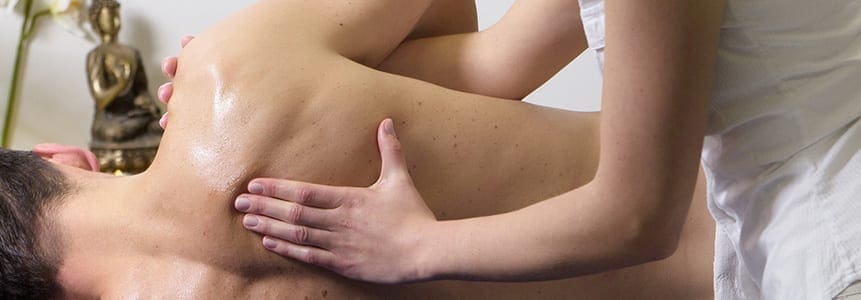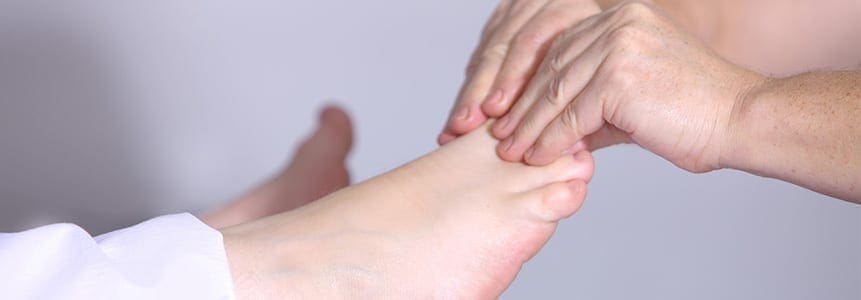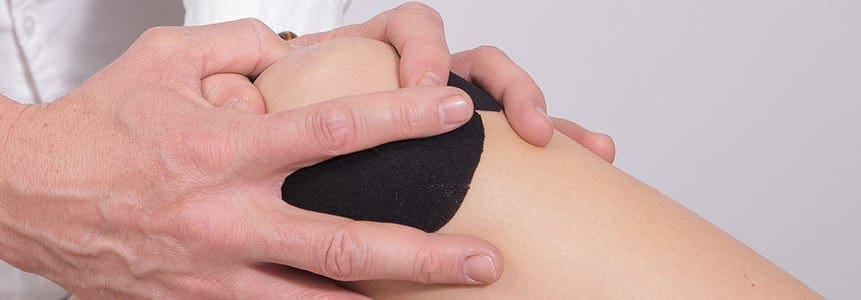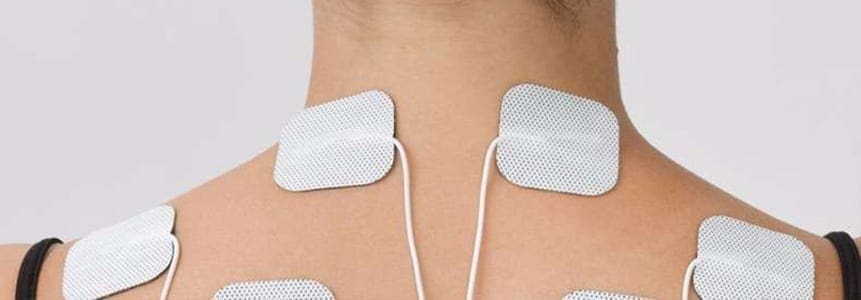Treatments & Physiotherapy
Orla offers a wide range of treatments for pain and discomfort using physiotherapy. She is qualified to work with the treatment of injuries and ailments in both adults and children and also offers dry needling and sports therapy to release muscles.
Physiotherapy Services

Manual Therapy
Manual, manipulative physiotherapy is the management of orthopaedic conditions using manual, hands-on therapeutic approaches. These include passive movement of joints and carefully controlled manually guided high velocity low amplitude thrust techniques (manipulation).
These techniques are utilised to improve physiological function and range of motion at joints. Other manual techniques include soft tissue mobilisation, manual stretching and neural glides.
Myofascial release therapy is a form of manual therapy used to treat tight, painful knots found in muscle tissue. These are sometimes referred to as ‘trigger points’.
Myofascial release techniques are hands on treatments utilised to free up tight or knotted areas of tissue. Once released there is an increase in blood flow back into the affected tissue helping to reduce tension and alleviate pain.

Manual Lymph Drainage Complete Decongestive Therapy
Manual Lymph Drainage is a light skin stretching massage that helps promote the movement of lymphatic fluid out of the swollen part of the body. It should not be confused with traditional massage. It is a specialised therapy designed to improve the functioning of the lymphatic system. Therapy is applied first to your unaffected areas making it possible for the fluid to move out of the affected area, or ‘decongest’ the region.
MLD is particularly good for traumatic bruising, post-surgical swelling. It can be also be used to treat sinusitis, some skin conditions and can help the healing of wounds and scars and improve the appearance of new and old scars.
When combined with skincare, exercises and compression bandaging and/or compression garments it is called Complete Decongestive Therapy. This is recommended for primary and secondary Lymphoedema and Lipoedema.

Biomechanical Assessment & Orthotic Prescription
Faulty biomechanics (how your body moves) can be a key reason for injury and recurrent injury. The prescription and use of custom-made orthotic insoles can help normalise biomechanics and recovery from injury.
What is Biomechanics?
The field of biomechanics applies principles of mechanics to study the structure and function of biological systems. The basis of biomechanical analysis is the determination of how forces generated within the body, or how forces applied to the body, influence the way that we move.
Structural problems in your feet can alter your walking pattern, running pattern & cause pain throughout your body. Clear & accurate assessment of the mechanics of your lower limbs is key to understanding the profound effect that subtle faults in your foot, ankle, knee & hip alignment can cause.
What We Offer
Orla may perform a detailed investigation to determine how you move (kinematics) or identify the causes of body movement (kinetics) to enhance her understanding of issues concerning health and exercise.
She will take a lower limb mechanical assessment of you, to provide a complete diagnostic of foot & lower limb function; allowing treatment or orthotics to be prescribed accurately.
Orthotics are insoles that are custom designed for your feet. To get the specifications and individual needs for your feet, a plaster cast of your foot in its relaxed position will be taken and then sent on to a lab where the custom insole will be created
When you start wearing the new insole it will begin to correct the alignment of your foot which will be reflected in your body. These orthotic insoles will help to relieve any pain from tissue strain or abnormal structures in the body.
Myofascial release therapy is a form of manual therapy used to treat tight, painful knots found in muscle tissue. These are sometimes referred to as ‘trigger points’.
Myofascial release techniques are hands on treatments utilised to free up tight or knotted areas of tissue. Once released there is an increase in blood flow back into the affected tissue helping to reduce tension and alleviate pain.

Dry Needling
Dry Needling is a very successful medical treatment which uses very thin needles, without any medication (a dry needle) to achieve its aim. Dry Needling is used to treat pain and dysfunction caused by muscle problems, sinus trouble, headaches, and some nerve problems. It is not at all the same as acupuncture. Acupuncture is part of Traditional Chinese Medicine, whereas dry needling is a western medicine technique, which needs to have a medical diagnosis.
Dry Needling works by changing the way your body senses pain (neurological effects), and by helping the body heal stubborn muscle spasm associated with trigger points (myofascial effects). There are additional electrical and chemical changes associated with dry needling therapy which assist in the healing process. It is important to see the needles as just one part of your overall rehabilitative treatment. Dry needling is not a miracle cure, it is just part of physiotherapy. It is vital that you do the exercises and follow the advice your therapist gives you in conjunction with the needling for optimal recovery.
Orla has been specifically trained in the various needling techniques. Your therapist will choose a length and thickness of needle appropriate for your condition and your body size, and then insert it through the skin at the appropriate place. You will feel a small pinprick. Depending on the type of needle technique chosen by your therapist, you may also feel a muscle ache and a muscle twitch. These are all normal and good sensations and mean that you will experience good relief from your symptoms.
In general, there is very little risk associated with this technique if preformed properly by a trained physiotherapist. You may have a little bruising around the needle site, much the same as you would with any injection. On rare occasions, people may feel very happy, tearful, sweaty or cold. These symptoms all fade quickly. Fainting may occur in a very small minority of people. There are no lasting ill effects of these side effects.

Post-Surgical Rehabilitation
Physiotherapy plays an important role in rehabilitation post-surgery to help reduce pain, swelling and stiffness, and to guide you on an individualised rehabilitation program for a quicker, stronger recovery. It is also important to rehab under the guidance of a physiotherapist to avoid developing compensatory movements such as a limp following surgery of the leg, which may result in problems with other parts of the body such as the lower back.
Orla is also trained in pre-operative physiotherapy, if time allows, to help strengthen and prepare the problematic area before surgery in order to increase the rate of recovery post-op and reduce the risk of complications.

Ultrasound Therapy
Ultrasound Therapy is the use of sound waves to treat medical problems, especially musculoskeletal problems like inflammation from injuries (sprains, tendinitis, bursitis).
It is also being successfully used in the treatment of blocked breast ducts during breastfeeding.
Ultrasound is applied using the head of an ultrasound probe that is placed in direct contact with your skin via a transmission coupling gel.
Therapeutic ultrasound has been shown to cause increases in:
- healing rates
- tissue relaxation
- tissue heating
- local blood flow
- scar tissue breakdown

Laser Therapy
A laser is a device that produces a light low level laser therapy (LLLT) is used to treat various musculoskeletal conditions.
LLLT is a non-invasive light source treatment that generates a single wavelength of light – this assists in healing body tissues. It has been shown to aid pain relief, reduce inflammation, increase blood flow, stimulate wound healing, stimulate tissue regeneration and reduce scaring.
Research has shown that laser therapy can be a powerful anti-inflammatory that is equally effective to anti-inflammatory medications.

TENS Machine Therapy
A TENS machine is an electric medical device. TENS is an abbreviation of Transcutaneous electrical nerve stimulation.
In simple terms, a TENS machine stimulates your nerves via an electrical current through your skin. A TENS machine may assist you in modest short-term pain relief.

Cranio-Sacral Therapy / Myofascial Release
Cranio-sacral therapy (CST) is a light-tough hands-on therapy that enhances the body’s natural capacity for healing. For 30 years CST has been shown to be effective in treating a whole range of physiological issues associated with pain and loss of biomechanical and emotional wellbeing.
CST is used both as a primary treatment method and in combination with other traditional (physiotherapy) techniques.
Craniosacral therapy and Myofascial Release Therapy encourages the body to release restrictions that it has been unable to overcome on its own.
Rather than deciding how these changes should be made, the therapist follows the body’s response as to how to proceed. Following this gentle approach helps ensure the method is safe and effective (IACST).

Mechanical Spinal Traction
Spinal traction is a form of decompression therapy that relieves pressure on the spine. It can be performed manually or mechanically. Spinal traction is used to treat herniated discs, sciatica, degenerative disc disease, pinched nerves and many other back and neck disorders.

Paediatrics
Orla is trained to treat children as young as a few months old for any of the musculoskeletal, biomechanical or developmental problems that may arise.
They include:
Biomechanical issues, including pes planus (flat feet) and gait and postural abnormalities
‘Growing pains’ Apophysitis of the heel and knee
Hypermobility
Juvenile Arthritis
Torticollis
Trauma/Fractures/Soft tissue Injuries

